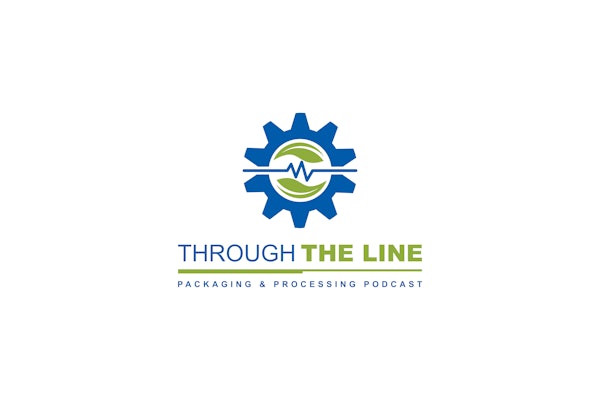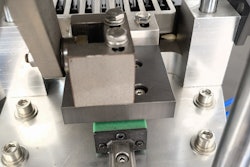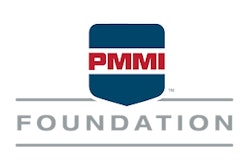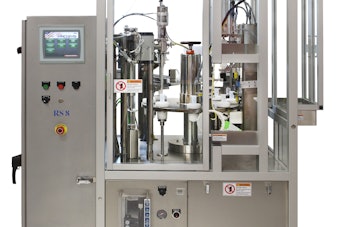During her presentation, "Update on America's Battle Against Tainted Medicine," at the PPF, held in March in Philadelphia, Eban addressed packaging's role in counterfeit drugs and spoke of positive changes since her book was published.
"A lot of counterfeiters have been able to get active lot numbers because they have sources right inside manufacturing companies," Eban contends. "They can find out this type of information, and they are usually six to nine months behind the manufacturers. So, constant changing of security features and embedding of overt and covert security features, and the use of new technologies are necessary" [for drug makers]. "Most important is to think like a counterfeiter would think. They are out there looking for any weakness that can be exploited.
"Counterfeiters loved that both the 2,000-U/mL and 40,000-U/mL dose of Epogen had red caps and no other distinguishing packaging features. That made it easy for them to up-label." By that, she means counterfeiters could alter the label so that a 2,000-U/mL dose could be sold as the more expensive 40,000-U/mL dose.
"Distributors were buying back the very vials they sold originally, thinking they were getting a great discount on 40,000-U/mL of Epogen," says Eban. Epogen is a man-made protein that stimulates bone marrow to make red blood cells to treat anemia caused by kidney failure, chemotherapy, or a medicine used to treat HIV.
The "Dangerous Doses" author gives kudos to Amgen and Ortho Biotech for developing drug packaging that incorporates "smart fixes to prevent counterfeiting, such as using different-colored caps for different doses and certain features that make it hard to up-label."
The challenge for packagers is considerable: Not only do manufacturers need to differentiate packages of their own products to prevent up-labeling, but they also need to be aware of similar packages used for other medicines made by other companies. Eban cites the example of counterfeiters buying a fertility drug that was packaged similarly to a pricier drug called Serostim, an injectible human growth hormone produced by recombinant DNA technology that's used in the treatment of HIV-associated wasting or Cachexia. In this instance counterfeiters took advantage of similar packaging to sell the fertility drug as Serostim.
"Counterfeits are still reaching patients in this country and all over the world through various means," she says. "We're familiar with the ongoing Heparin case."
Of course, in addition to counterfeiting, there's the grey market and product diversion. Eban explains, "There is rampant pharmaceutical theft across this country, and it's taking place every day. Trucks with pharmaceuticals are getting hijacked, warehouses are broken into, and individuals are stealing drugs from hospitals and pharmacies. All of this stolen medicine is diverted, poured into the grey market. This is adulterated medicine, which has no known origin, therefore its purity can't be guaranteed. It's not fit for human consumption, but it's not necessarily counterfeit."
Since her book was published in 2005, Eban says that there has been significant reform. "The big three wholesalers have pledged to stop buying from secondary markets," she relates. "CVS also announced a boycott of any wholesale companies that buy from secondary markets. They put a lot of pressure on the big three. And manufacturers have become very smart, threatening their authorized distributors by saying, 'If you are buying our products from anybody but us, you're done.'
"The big three wholesalers still buy an unknown amount [of drugs] from secondary wholesalers," she says. "They won't say how much. We know from sources that they still do this, and their explanations are similar [and vague]-there is a shortage, or they only do it in very unique circumstances, or only when they must, etcetera. Wholesalers took the FDA to court and basically tied up their effort to implement the long-postponed pedigree rule. States under pressure from wholesalers have rolled back some of these reforms. California postponed its date for e-pedigree implementation to 2011."
-By Jim Butschli, Editor
"A lot of counterfeiters have been able to get active lot numbers because they have sources right inside manufacturing companies," Eban contends. "They can find out this type of information, and they are usually six to nine months behind the manufacturers. So, constant changing of security features and embedding of overt and covert security features, and the use of new technologies are necessary" [for drug makers]. "Most important is to think like a counterfeiter would think. They are out there looking for any weakness that can be exploited.
"Counterfeiters loved that both the 2,000-U/mL and 40,000-U/mL dose of Epogen had red caps and no other distinguishing packaging features. That made it easy for them to up-label." By that, she means counterfeiters could alter the label so that a 2,000-U/mL dose could be sold as the more expensive 40,000-U/mL dose.
"Distributors were buying back the very vials they sold originally, thinking they were getting a great discount on 40,000-U/mL of Epogen," says Eban. Epogen is a man-made protein that stimulates bone marrow to make red blood cells to treat anemia caused by kidney failure, chemotherapy, or a medicine used to treat HIV.
The "Dangerous Doses" author gives kudos to Amgen and Ortho Biotech for developing drug packaging that incorporates "smart fixes to prevent counterfeiting, such as using different-colored caps for different doses and certain features that make it hard to up-label."
The challenge for packagers is considerable: Not only do manufacturers need to differentiate packages of their own products to prevent up-labeling, but they also need to be aware of similar packages used for other medicines made by other companies. Eban cites the example of counterfeiters buying a fertility drug that was packaged similarly to a pricier drug called Serostim, an injectible human growth hormone produced by recombinant DNA technology that's used in the treatment of HIV-associated wasting or Cachexia. In this instance counterfeiters took advantage of similar packaging to sell the fertility drug as Serostim.
"Counterfeits are still reaching patients in this country and all over the world through various means," she says. "We're familiar with the ongoing Heparin case."
Of course, in addition to counterfeiting, there's the grey market and product diversion. Eban explains, "There is rampant pharmaceutical theft across this country, and it's taking place every day. Trucks with pharmaceuticals are getting hijacked, warehouses are broken into, and individuals are stealing drugs from hospitals and pharmacies. All of this stolen medicine is diverted, poured into the grey market. This is adulterated medicine, which has no known origin, therefore its purity can't be guaranteed. It's not fit for human consumption, but it's not necessarily counterfeit."
Since her book was published in 2005, Eban says that there has been significant reform. "The big three wholesalers have pledged to stop buying from secondary markets," she relates. "CVS also announced a boycott of any wholesale companies that buy from secondary markets. They put a lot of pressure on the big three. And manufacturers have become very smart, threatening their authorized distributors by saying, 'If you are buying our products from anybody but us, you're done.'
"The big three wholesalers still buy an unknown amount [of drugs] from secondary wholesalers," she says. "They won't say how much. We know from sources that they still do this, and their explanations are similar [and vague]-there is a shortage, or they only do it in very unique circumstances, or only when they must, etcetera. Wholesalers took the FDA to court and basically tied up their effort to implement the long-postponed pedigree rule. States under pressure from wholesalers have rolled back some of these reforms. California postponed its date for e-pedigree implementation to 2011."
-By Jim Butschli, Editor


















